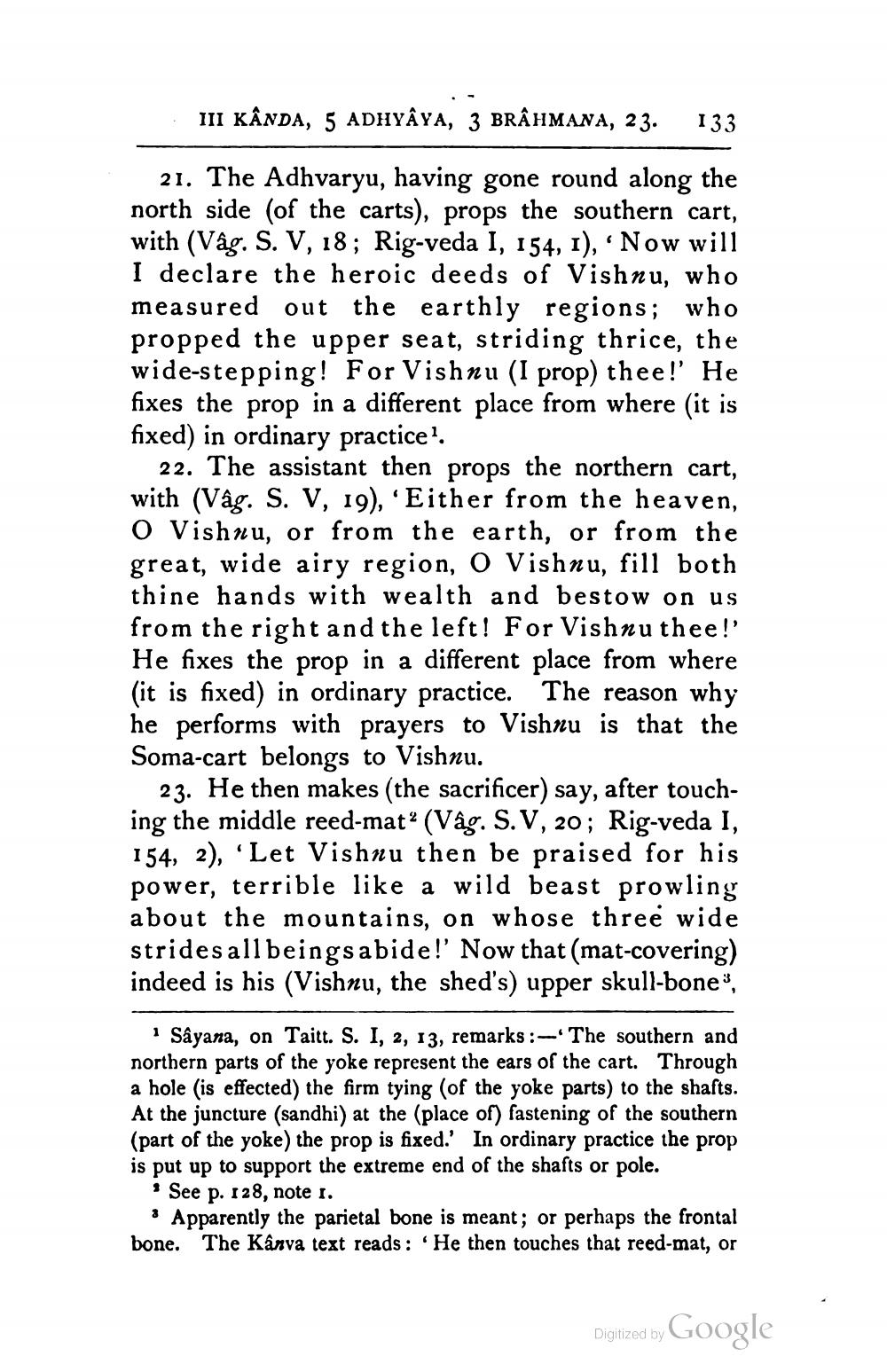________________
III KÂNDA, 5 ADHYAYA, 3 BRÂHMANA, 23.
133
21. The Adhvaryu, having gone round along the north side (of the carts), props the southern cart, with (Våg. S. V, 18; Rig-veda I, 154, 1), Now will I declare the heroic deeds of Vishnu, who measured out the earthly regions; who propped the upper seat, striding thrice, the wide-stepping! For Vishnu (I prop) thee!' He fixes the prop in a different place from where it is fixed) in ordinary practice'.
22. The assistant then props the northern cart, with (Vâg. S. V, 19), 'Either from the heaven, O Vishnu, or from the earth, or from the great, wide airy region, O Vishnu, fill both thine hands with wealth and bestow on us from the right and the left! For Vishnu thee!' He fixes the prop in a different place from where (it is fixed) in ordinary practice. The reason why he performs with prayers to Vishnu is that the Soma-cart belongs to Vishnu.
23. He then makes (the sacrificer) say, after touching the middle reed-mat? (Vậg. S.V, 20; Rig-veda I, 154, 2), 'Let Vishnu then be praised for his power, terrible like a wild beast prowling about the mountains, on whose three wide strides all beings abide!' Now that (mat-covering) indeed is his (Vishnu, the shed's) upper skull-bone",
Sâyana, on Taitt. S. I, 2, 13, remarks:—The southern and northern parts of the yoke represent the ears of the cart. Through a hole (is effected) the firm tying (of the yoke parts) to the shafts. At the juncture (sandhi) at the (place of) fastening of the southern (part of the yoke) the prop is fixed.' In ordinary practice the prop is put up to support the extreme end of the shafts or pole.
* See p. 128, note 1.
* Apparently the parietal bone is meant; or perhaps the frontal bone. The Kanva text reads: "He then touches that reed-mat, or
Digitized by Google




